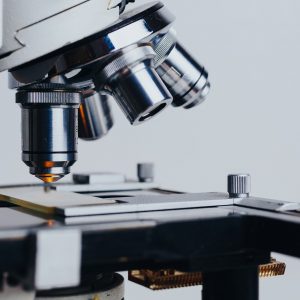“Biochemistry – Animals” is the knowledge basis for all human and animals health studies. Learn with highly qualified and experienced tutors the basis of life.
Lessons cover: Introduction to biochemistry, lipids, proteins, enzymes, nucleic acids, thermo regulation, carbohydrate metabolism, absorption, acidity, alkalinity, chemical analysis, and industry applications.
COURSE STRUCTURE
There are 10 lessons as follows:
- Introduction to biochemistry
- Lipids and proteins
- Enzymes and hormones
- Nucleic acids
- Thermo-regulation
- Carbohydrate metabolism
- Absorption
- Acidity and alkalinity
- Chemical analysis
- Biochemical applications
Each lesson culminates in an assignment which is submitted to the school, marked by the school’s tutors and returned to you with any relevant suggestions, comments, and if necessary, extra reading.
AIMS
- Identify characteristics of common chemical compounds important in animal and human biochemistry.
- Explain the characteristics of major biochemical groups, including carbohydrates, lipids, and proteins.
- Explain the characteristics of chemicals which control biological processes in animals and humans, including enzymes and hormones.
- Explain the role of nucleic acids in the biology of animals and humans.
- Explain the role of thermo-regulation in animals and humans.
- Explain the role of carbohydrate metabolism in animals and humans.
- Identify the characteristics of acidity and alkalinity in relation to animals and humans.
- Develop simple chemical analysis skills relevant to testing animals.
- Identify applications and uses for biochemical processes and products.
WHAT YOU WILL DO IN THIS COURSE
Here are just some of the things you may be doing:
- Explain the formulae of ten specified chemical compounds commonly found in animals and humans
- Calculate the percentages of elements contained in two specified chemical compounds
- Differentiate between characteristics of major groups of biochemicals including:
- carbohydrates
- proteins
- amino acids
- lipids
- nucleic acids
- Identify differences between monosaccharides
- Differentiate between plant and animal/human biochemistry, with three examples of biochemical processes unique to eachand polysaccharides
- Differentiate between a fat and an oil
- Explain the characteristics of a specified protein formula
- Compare two fibrous proteins with two globular proteins
- Explain the functions of carbohydrates in animals/humans
- Explain two commercial applications for lipids in the learners chosen industry.
- Explain two commercial applications for proteins in the learner’s industry
- Explain two commercial applications for carbohydrates in the industry the learner’s industry
- Distinguish between an enzyme and a hormone
- Explain how one specific enzyme functions in an animal/human
- Explain how one specific hormone functions in an animal/human
- Explain the relevance of hormones to the learner’s chosen industry sector
- Explain the relevance of enzymes to the learner’s chosen industry sector
- Define relevant terminology, including:
- nitrogenous base
- double helix model
- nucleotides
- pentose sugars
- Explain the importance of RNA in animals/humans, including:
- location in cells
- composition/structure
- functions
- Explain the importance of DNA in animals/humans, including:
- location in cells
- composition/structure
- functions
- Describe the biological and chemical differences between RNA and DNA
- Explain the role of ATP in providing energy for various cellular activities
- Define relevant terminology, including:
- heat
- metabolic rate
- basal state
- fever
- heat stroke
- hypothermia
- Explain the mechanisms of body heat production in animals/humans
- Describe the homeostatic processes which regulate body temperature
- Explain the mechanisms of body heat loss in animals/humans
- Define relevant terminology, including:
- glycogenesis
- lipogenesis
- aerobic & anaerobic cellular respiration
- kinases
- carbohydrate loading
- glucose anabolism
- List the main biochemical processes involved in animal/human carbohydrate metabolism
- Explain glycolysis, including the sequence of chemical reactions involved
- Explain the Krebs cycle, including the sequence of chemical reactions involved
- Explain the electron transport chain, including the sequence of chemical reactions involved
- Explain differences in animal/human carbohydrate metabolism for a specified situation
- Define relevant terminology, including:
- absorptive state
- post absorptive state
- insulin
- cortisol
- epinephrine
- Explain the processes occurring during the absorptive (fed) state, including:
- biochemical reactions
- hormonal regulation
- sites of activity
- Explain the processes occurring during the post absorptive (fasting) state, including:
- biochemical reactions
- hormonal regulation
- sites of activity
- Define relevant terminology, including: *acid *alkaline *neutral *pH scale
- Describe three chemical buffering effects including:
- bicarbonate buffering system
- phosphate buffering system
- protein buffering system
- Explain the role of pH in the control of respiration
- Explain the importance and methods of pH control of human blood
- Identify factors involved in controlling acidity and alkalinity in a specific case study
- Define relevant terminology, including:
- calibration
- electroconductivity
- chromatography
- colorimeter
- indicators
- Compare a chemical test kits (eg. indicator strips) with chemical meters (eg. haemoglobin meter), in terms of the following:
- accuracy
- ease of use
- portability
- maintenance
- calibration
- costs
- Explain the practical applications of various analytical techniques in industry, including:
- chromatography (TLC, GC)
- colorimetry
- atomic absorption
- Determine the value of analytical techniques used in the learners industry sector, including:
- efficiency
- accuracy
- ease of use
- Differentiate between chemical toxicity and tolerance
- Explain the implications of LD50 characteristics of five different chemical substances
- Explain the implications of half-life characteristics of five different chemical substances
- List the active toxins in ten poisonous plants or animals which commonly occur your locality
- Explain the effects of two naturally occurring toxins on the human body
- Explain the function and use of two different plants as medicines, for humans or animals
- Determine three different applications for animal tissue culture





